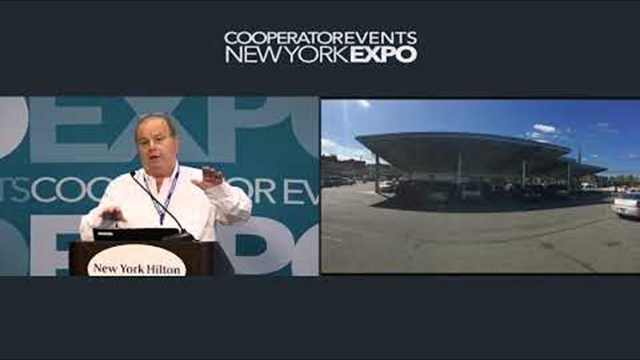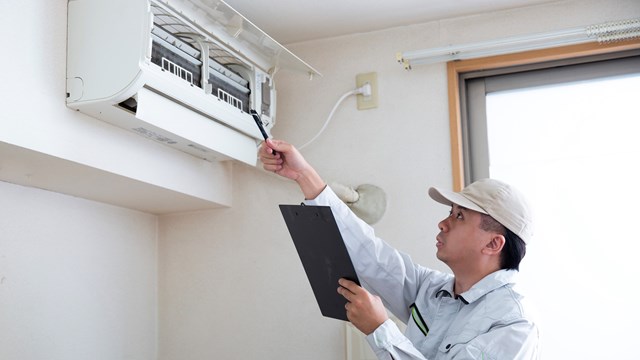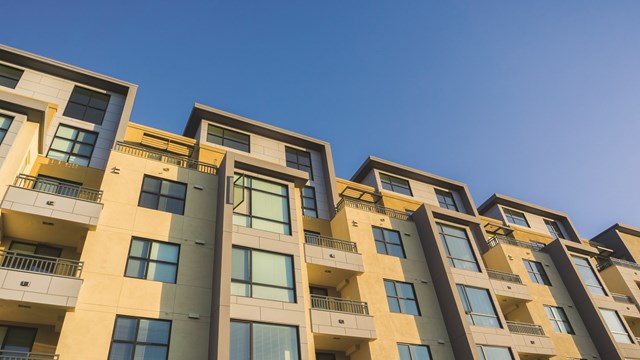
As gasoline prices rise with increasing summer demand, building administrators' attention has turned sharply to the cost of energy, and ways to trim fat from their overall energy budgets.
Yet for the nation’s nearly 60 million condo dwellers, considering newer energy-saving options can be a tricky proposition at best. While some condos and co-ops move rapidly to adopt the latest green technologies, many building communities, still governed by documents drafted decades or even whole generations ago, may be burdened with legal language that expressly prohibits them from making a variety of environmentally-friendly updates.
Has your building gone green? And, if not, how green can you go?
“I think what you’re seeing is just the beginning of those types of questions arising for [condo] associations,” says Mitchell Frumkin, president of Kipcon, Inc., a New Jersey-based engineering and consulting firm that provides condo reserve and transition studies. “As we go into the future, and people are looking more at the sustainable options such as solar panels, you’re going to see more of that because it’s affecting the common elements of the community.”
Who Owns That Component?
Green usually sounds very appealing—at least in theory. The problems, experts note, arise from the unique legal aspects of a condo community. In apartment buildings and similar forms of high-density housing, property ownership is clearly defined through the traditional landlord/tenant relationship. Not so with condo and co-op properties, and many experienced managers can speak to the unusual ownership questions that sometimes arise.
C. Jaye Berger, Esq., of the Law Offices of C. Jaye Berger in Manhattan, an attorney specializing in real estate and construction law, points out that if a board wants to invest in large projects such as the installation of solar panels, they might require a vote by the entire community.
Berger explains that in New York, under the Condominium Act, there's a portion of the statute that deals directly with making costly investments and large scale changes to the common elements and that's called the "incident to use of occupancy to the unit," which in essence, says that if proposed alterations would make changes in the permanent character of the building then this must be voted on by the entire community.
"If you have to call the bank [to arrange financing] for the upgrades then you're probably going to need a vote by the entire community," says Berger. "Making changes such as the addition of solar panels to the building's roof is no different than if the board decides to lease out the building's basement for commercial purposes."
“Generally when [co-op/condo boards] replace a piece of equipment or roof, for example,” adds Frumkin, “they don’t really have a problem. They just do it. But when they start changing the common elements by putting solar panels on roofs and things like that, they may run into restrictions based on the community's governing documents.” (While it is true that some condo documents still expressly prohibit solar panels, this fact is rapidly changing. Nearly all states have addressed solar rights and easements in recent years, and a number of states have gone so far as to prohibit language that would limit solar panels. Condominium properties have been excluded in some cases.)
Yet despite some remaining prohibitions, many possibilities exist that would have minimal impact on community aesthetics. “I have heard of it happening that a covenant or a condo document might forbid a photovoltaic array," says Kevin Morrow, senior project manager for the National Association of Home Builders (NAHB) Green Buildings division. "But that’s not to say that a structure can’t still meet some sort of green criteria. As materials wear out, they’re going to need to be replaced. For just about every piece of equipment or building material that exists out there, there’s a greener alternative. That alternative could be trading out the carpet in your common areas—changing it for a carpet that is doing less off-gassing. When you’re repainting your common areas, shop for paints that have fewer volatile organic compounds in their vapors.”
While Morrow admits some updates—such as changes to carpet and paint—offer no clear economic benefit, many easily adopted green technologies will quickly show through on the bottom line. “One that you see a lot of and which really goes to help everyone, in the common areas specifically, is opting for more efficient lighting—doing away with incandescent bulbs in favor of fluorescent or even more-efficient LED lighting. That’s something that you see a lot of buildings going to.”
The obvious upside, says Morrow, is a shared decrease in a property’s total energy cost. “If you’re landscaping and you opt for landscaping that is less intensive in terms of irrigation required, that’s going to obviously decrease the water bill. So there’s an economic benefit as well as an environmental benefit.”
Easy Fixes Abound
But for boards considering more substantial “green” improvements, experts point to many basic structural updates that can be enacted without risking covenant violation. “It’s relatively easy for a community to reduce their energy costs in a few ways," says Frumkin. "By addressing the mechanical equipment [and] by looking at the building envelope, for example. And when I’m talking about the building envelope, I’m talking about the walls, the outside walls, the roof, the foundation, that type of thing. It’s pretty much a proven fact that on any type of building, if you do some relatively inexpensive upgrades to the building envelope, you can generally save in the range of 15 or more percent in energy costs.”
“I think the key to making the decisions about what to do, as with all things, lies in what the building community's goals are," says Morrow. "You can make any building more efficient, and frankly, the older a building is, the easier it is to make it operate better. Generally speaking, it’s easy to get to the attic. Obviously heat rises, and most heat leaves a building by going up through the attic. If that attic is under-insulated, that’s a place you can lose a lot of resources and a lot of money along with them. So making sure your insulation is adequate—up to code, at minimum, and maybe even beyond code—is another thing you would likely look at doing early on.”
Easier still, say experts, in some areas cutting energy costs could be as simple as flipping a switch—by making a switch to deregulated energy and choosing a third party Energy Service Company or ESCO. New York has been deregulated since 1998, and some states are just choosing to do it now. “In most instances, when your homeowners change over their energy to a deregulated source, they’re probably going to save between eight and 10 percent on their energy costs. And if the community changes over the energy supply for their common area clubhouses, they can generally save about 15 percent of their energy costs by just switching to deregulated energy. Talk about low-hanging fruit!” he says.
When considering larger capital expenditures, the key, says Frumkin, is crunching the numbers and thinking outside the box. “Let’s take a piece of equipment, and say it’s going to cost $50,000 a year in energy…. When it comes time to replace that equipment, instead of using a standard piece of equipment, let’s use a high-efficiency piece of equipment. The energy cost goes from $50,000 to $25,000 per year. You may be spending more for the equipment, but your energy cost drops in half because you’re using higher-efficiency equipment,” he explains. “My point is that there are huge opportunities for associations and buildings to do this sort of thing, and nobody does it.”
Greening your building however does not necessarily mean scrapping your old HVAC system, installing solar panels on the roof or topping your building with a wind turbine. There are many simple things a board can do that would not require a vote by the entire community. Some simpler, less costly investments can be made such as the installation of energy-efficient lighting; eco-friendly carpeting or paints; computer controlled thermostats, etc. Most importantly, these green improvements do not necessarily require a vote by the entire community.
"If it's not a major investment, or one that would change the overall character of the building but merely the aesthetics, then the board can vote on that. At real estate trade shows I often come across companies that are selling more eco-friendly lighting. This is a decision that the board could easily vote on as it falls under the general operation of the building," says Berger.
Boards have it under their purview, says Frumkin, but rarely don’t do anything unless compelled to do so. “I think the big, big mistake associations make is that they don’t do common area upgrades because you can get unbelievable pricing for capital replacement work by some of the best contractors due to the economic conditions. They’re looking for work. So I think any community that gets in the fear factor mode because of what they read in the papers is going in the complete opposite direction they should be going in. Most of them have been accumulating reserve funds, irrespective of the economy, and that money is there to be spent and now is the time to spend it for a number of different reasons—the cost, the quality of the contractors, and the fact that they can significantly help the economy by doing this at this point.”
“For buildings and associations, there are huge opportunities for turning their communities green,” Frumkin says. “In my mind, the opportunities for these multifamily communities are much more significant than the normal world.”
Matthew Worley is a freelance writer and a frequent contributor to The Cooperator.









Leave a Comment